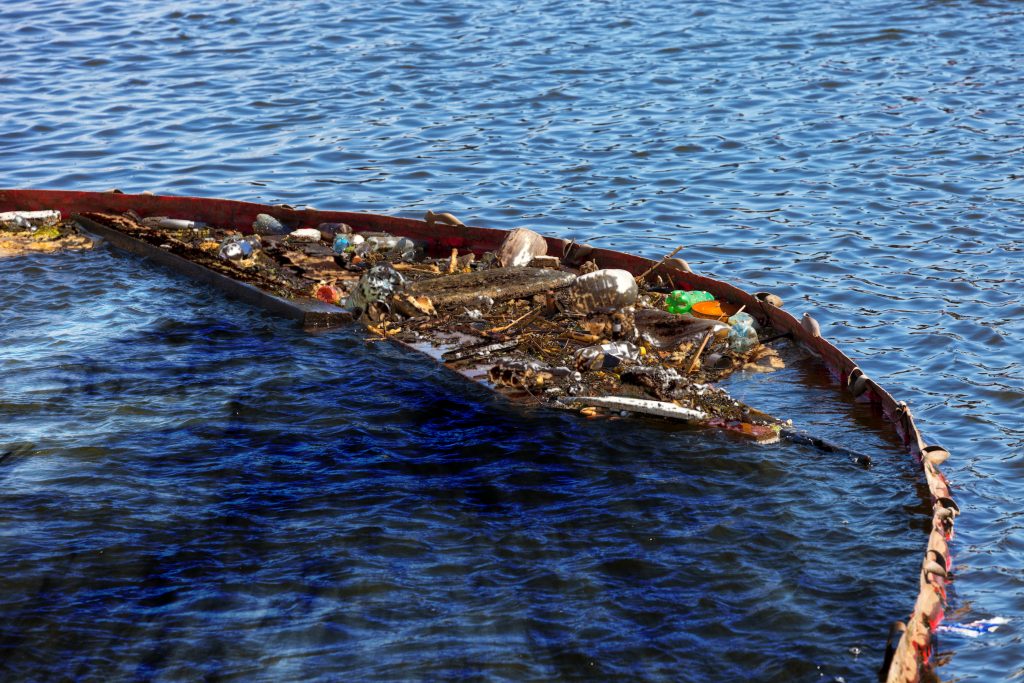4 ways to tackle ocean trash besides Ocean Cleanup’s broken system
A controversial plan to capture trash in the Pacific isn’t panning out as planned
Cleaning up ocean pollution is no simple task, as an effort to fish plastic out of the Pacific Ocean is revealing.
In September, scientists launched a 600-meter-long boom meant to herd plastic debris from the great Pacific garbage patch into a net (SN Online: 9/7/18). The trash accumulation, which is twice the size of Texas, swirls in waters between California and Hawaii.
But some scientists worry the system, designed by a Dutch organization called Ocean Cleanup, could harm marine wildlife. Others aren’t convinced it will even work. Four months in, some of those concerns appear to be founded: Wind and currents have pushed trash into the rig, but the setup hasn’t kept the trash corralled as planned. Now part of the rig has broken off, and the device is being towed back to shore for repairs and design tweaks.
Whether the system will eventually help remove garbage from the Pacific remains to be seen. But it’s not the only option for reducing how much plastic is dumped in the oceans — now at some 5 trillion pieces, per some estimates. Here are a few other approaches seeing success.
1. Meet Mr. Trash Wheel and friends
It’s easier to collect trash from rivers and streams than from the open ocean. Baltimore has deployed three giant waterwheels that trap river plastic before it flows into the harbor.
The first installation, adorned with googly eyes and dubbed Mr. Trash Wheel, debuted in 2014, followed by Professor Trash Wheel in 2016 and Captain Trash Wheel in 2018. Collectively, the wheels so far have removed more than 680,000 kilograms of trash.
Mr. Trash Wheel wasn’t immediately successful, though, says Adam Lindquist, director of Baltimore’s Healthy Harbor Initiative. A waterwheel installed in 2008 didn’t work well. He suggests that the Ocean Cleanup group, in tweaking its device, could also see improvements — though clearing plastic from the ocean is certainly a bigger job than cleaning a river, he says.
2. Snag it on land
Collecting debris as it’s washed onto beaches is another way to tackle the plastic problem. “Lots of published papers show the ocean spits out trash really quickly,” says Marcus Eriksen, an environmental scientist and cofounder of the 5 Gyres Institute based in Los Angeles.
The U.S. National Oceanic and Atmospheric Administration’s Marine Debris Program, for example, has collected more than 450 tons of garbage from the Alaska shoreline since 2006.
3. Rise of the bans
Using less plastic in the first place is the most straightforward way to cut down on ocean pollution. Many cities and 127 countries have imposed regulations on single-use plastic, such as grocery bags or plastic straws, according to a December report from the U.N. Environment Program.
These restrictions can make a difference. In 2010, thousands of volunteers collecting and tallying garbage along the California coast found that 7 percent of the trash consisted of plastic bags. In 2017, after multiple California cities imposed plastic bag bans or restrictions, the bags made up less than 2 percent of trash gathered.
Bans can also fight debris that the Ocean Cleanup’s system won’t snag — microplastics, tiny fragments that can harm the health of people and other animals. The United States banned microbeads in personal care products starting in 2017; the European Union has voted to enact a similar ban by 2020.
4. Rethink the cycle
Plastic can take decades or even centuries to break down, so some scientists are working on alternatives that are easier to recycle. For example, a type of recyclable plastic described in Science in 2018 can be broken down into component pieces and rebuilt again and again (SN: 5/26/18, p. 12). But if recyclable plastic ends up in a landfill or in the ocean, those special properties won’t matter.
“There’s a really big gap between what can be recycled in a perfect world, and what actually gets recycled,” says Miriam Goldstein, the director of ocean policy at the Center for American Progress, a research and lobbying organization in Washington, D.C. Bridging that gap isn’t as simple as telling people to use less plastic, she says. “You cannot opt out of single-use plastics in most of the country,” and lots of products are designed in ways that make them challenging to properly recycle.
That’s one reason why an approach called extended producer responsibility is gaining popularity — essentially, holding companies that make plastic products responsible for the cost of proper disposal. “If you’re going to make anything, you need to think of the recovery,” Eriksen says. Putting a financial burden on the producer provides an incentive for designing products that are easier to recycle or reuse. One example: using just one type of plastic instead of combining plastics that would then need to be separated for proper recycling.
The fishing industry also needs incentives to join in the cleanup, Eriksen says. Surveys of detritus that washes ashore suggest that a substantial portion is left by fishers. Giving them a financial reason to retrieve old nets and buoys could help keep our oceans clean.

